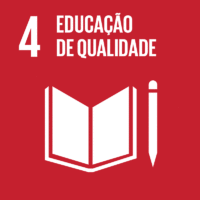Ciência_Iscte
Publicações
Descrição Detalhada da Publicação
Título Revista
Physical Review D
Ano (publicação definitiva)
2023
Língua
Inglês
País
Estados Unidos da América
Mais Informação
Web of Science®
Scopus
Google Scholar
Esta publicação não está indexada no Overton
Abstract/Resumo
We use ray-tracing techniques to determine the evolution of the event horizon of a large black hole that “gobbles” a tiny, traversable wormhole. This calculation has physical meaning in the extreme mass ratio limit. Two setups are considered; a single-mouth wormhole connecting two otherwise independent universes, and a double-mouth zero-length wormhole within the same universe. In the first setting it turns out that, at early times, there exist two disconnected horizons, one in each universe, which then merge as the wormhole falls into the large black hole. In the second setup, we observe the appearance of an “island,” a region of spacetime that is spatially disconnected from the exterior of the black hole, but in causal contact with future null infinity. The island shrinks as time evolves and eventually disappears after sufficient time has elapsed, as compared to the distance between the two mouths. This provides a communication channel with the interior of the large black hole for a certain time interval. We compute numerically the lifetime of the island and verify that it depends linearly on the intermouth distance. Extending the analysis to wormholes with finite length, we show that the achronal averaged null energy condition prevents the appearance of islands.
Agradecimentos/Acknowledgements
--
Palavras-chave
Classificação Fields of Science and Technology
- Ciências Físicas - Ciências Naturais
Registos de financiamentos
| Referência de financiamento | Entidade Financiadora |
|---|---|
| UIDB/00099/2020 | Fundação para a Ciência e a Tecnologia |
| 2022.08368.PTDC | Fundação para a Ciência e a Tecnologia |
| UIDP/00099/2020 | Fundação para a Ciência e a Tecnologia |
Contribuições para os Objetivos do Desenvolvimento Sustentável das Nações Unidas
Com o objetivo de aumentar a investigação direcionada para o cumprimento dos Objetivos do Desenvolvimento Sustentável para 2030 das Nações Unidas, é disponibilizada no Ciência_Iscte a possibilidade de associação, quando aplicável, dos artigos científicos aos Objetivos do Desenvolvimento Sustentável. Estes são os Objetivos do Desenvolvimento Sustentável identificados pelo(s) autor(es) para esta publicação. Para uma informação detalhada dos Objetivos do Desenvolvimento Sustentável, clique aqui.

 English
English


